calsfoundation@cals.org
Tupelo (Jackson County)
| Latitude and Longitude: | 35°23’35″N 091°13’50″W |
| Elevation: | 217 feet |
| Area: | 0.28 square miles (2020 Census) |
| Population: | 70 (2020 Census) |
| Incorporation Date: | December 22, 1904 |
Historical Population as per the U.S. Census:
|
1810 |
1820 |
1830 |
1840 |
1850 |
1860 |
1870 |
1880 |
1890 |
1900 |
|
– |
– |
– |
– |
– |
– |
– |
– |
– |
– |
|
1910 |
1920 |
1930 |
1940 |
1950 |
1960 |
1970 |
1980 |
1990 |
2000 |
|
205 |
317 |
264 |
249 |
188 |
201 |
246 |
248 |
208 |
177 |
|
2010 |
2020 |
|
|
|
|
|
|
|
|
|
180 |
70 |
|
|
|
|
|
|
|
|
Tupelo is an incorporated town located in the southern tip of Jackson County along a sandy ridge that runs along the edge of the White River bottoms from Augusta (Woodruff County) north to Jacksonport (Jackson County). Located about eighteen miles south of Newport (Jackson County), the town was at one time a station on the narrow gauge Batesville and Brinkley Railroad (B&B). The railroad allowed local crops, especially cotton and timber, to be shipped to market.
Micajah B. McCoy came to the area from South Carolina in the early 1840s. Acquiring both land and influence, McCoy represented Jackson County in the Arkansas House of Representatives in 1844 and 1845, and his plantation was called “Tupelo.” McCoy obtained land patents granted under the Swamp Land Act of 1850, whereby individuals obtained federal land for little or no cost as long as they drained and developed swamp and overflowed lands for productive use, primarily agricultural. McCoy’s parcels, along with land acquired by Bryant W. Jones and William Brazeale, would eventually become the nucleus of the town of Tupelo.
When the first post office in the area was established on June 12, 1884, it was named “Ibet.” Later that year, the name was changed to Tupelo, likely for the abundance of tupelo trees once found in the area. Tupelo’s original plat was filed on August 22, 1884. It was laid out to run north and south along the Rock Island Railway, with five blocks east and five blocks west of the railroad. By that time, construction of the Batesville and Brinkley Railroad had been completed from Brinkley (Monroe County) to Tupelo, but further construction ceased due to lack of funds. During that time, a passenger train known as “Old Jude” arrived every day from Brinkley. It was turned around by hand on a turntable in Tupelo to make the return trip the same day.
In July 1885, the Arkansas Gazette reported on the progress of the B&B, stating that the grading and bridge-building work was completed to within eight miles of Newport. In November 1886, the first passenger train arrived at Newport, with lines running between Brinkley and Newport until 1941, when the railroad was abandoned.
By 1888, Tupelo had steam-powered sawmills and gristmills, as well as a cotton gin. At one time, the town boasted physicians, hotels, a drugstore, and a saloon. In 1906, however, a ruling by the Jackson County judge denied applicants for a liquor license at Tupelo and further prohibited the operation of saloons in the three-mile area around the Tupelo schoolhouse.
Tupelo was incorporated in 1904. Earlier that year, twenty-three citizens also incorporated a bank. In 1919, fifteen incorporators, most from Tupelo, established a second bank, the first having failed. The Bank of Tupelo continued in full operation, even during the 1920s, when an average of 600 banks failed every year. In 1942, the bank safe was robbed of nearly $1,200 by three men and a woman. Most of the stolen money was recovered when the robbers were apprehended by the Federal Bureau of Investigation in a Chicago, Illinois, hideout. In 1946, Merchants and Planters Bank in Newport took over the existing charter of the Tupelo bank.
Throughout its history, most of the town’s businesses were located along Tupelo’s Front Street on the east side of the highway and railroad bed. In 1907, James I. Hastings opened the Hastings & Jones Store, which became Jones’ Store in 1925. The Collier Hotel was built in 1901 and stood until 1970. Other early Tupelo businesses included the Crittenden-Snapp Company (later known as Burton Mercantile) and the Crittenden Gin Company. During the Flood of 1927, the Cache River east of town spilled out of its banks, submerging buildings in Tupelo.
In 1867, a small group of citizens organized the Pleasant Hill Baptist Church, with its first meetings held at the home of Rutherford L. Jones. In 1889, the church was formally established, and the name was changed to Tupelo Baptist Church in 1901. In 1922, the original one-room building burned down, and a new building was erected the next year. Methodist services began in 1870 with services at Harris Chapel, north of Tupelo. Later services were held at a school building near Tupelo before 1900, when a Methodist Church building was built. In 1958, a new concrete block building was erected to replace the older one. African Americans once worshiped at the Strawberry African Methodist Episcopal Church. For many years, the Assembly of God Church was located just south of town. A new church building was built later on the west side of town. The Tupelo Church of Christ erected a wooden frame building in 1917. A new brick building was built in town, with its first services held in 1970. The church closed its doors in 1994.
Just a few miles west of Tupelo, the White Church School, built in the 1860s, was conducted in an old log Baptist church until 1912. That year, Adolphus L. Crittenden II converted his plantation store to a school for his children and other area children. In 1929, it consolidated with the Fitzhugh School, located farther west in Woodruff County. It is not known when the original Tupelo School, a wooden building located in town, was built. The building burned in 1941 and was replaced with a new brick building the next year. Peabody Elementary School, located south of town, served the school children who lived in the rural area located near the Woodruff County line. In the early 1920s, Peabody consolidated with the Tupelo Special School District, which consolidated with the Newport Public School District in 1930.
Albert Louis “Tom” Collier of Tupelo served as a member of the Arkansas House of Representatives from 1971 to 1993. In 1973, he introduced an act in the Arkansas General Assembly designating the honeybee as the state’s official insect.
Aside from the U.S. Post Office, no business establishments remain in the town in the twenty-first century. The Assembly of God is the only church building in town actively used as such, with most churchgoers of other denominations attending services at other area churches.
For additional information:
Gill, Minnie. “Tupelo First Celebrates 125th.” Arkansas Baptist, September 24, 1992, p. 20.
Gregory, Mildred Minor. “Early Days of Tupelo.” The Stream of History 4 (October 1973): 3–26.
Luker, Lady Elizabeth, and James Logan Morgan, eds. “Makers of Jackson County.” The Stream of History 20 (December 1983): 19–36.
“Newport Notes, the Batesville & Brinkley Railroad Rapidly Developing the Country.” Arkansas Gazette Sunday Magazine, July 17, 1883, p. 3.
“Two Men and Woman Loot Tupelo Bank.” Northwest Arkansas Times, March 24, 1942, p. 6.
Diane H. Norton
Snowmass Village, Colorado
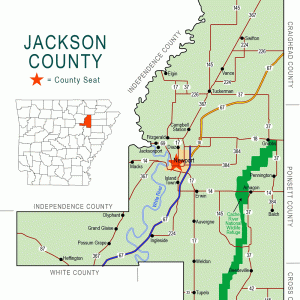 Jackson County Map
Jackson County Map  Tupelo Street Scene
Tupelo Street Scene 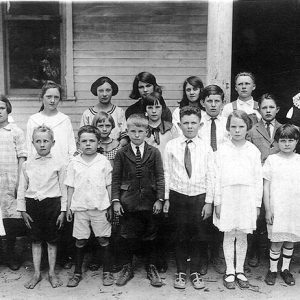 Tupelo School
Tupelo School 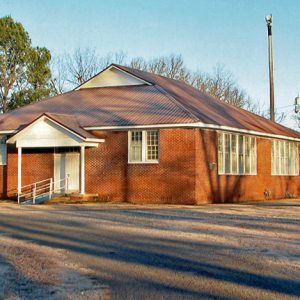 Tupelo Community Building
Tupelo Community Building 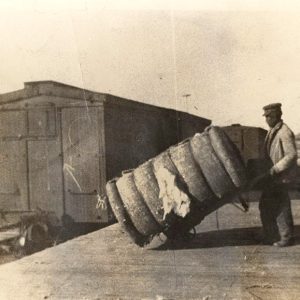 Tupelo Cotton
Tupelo Cotton 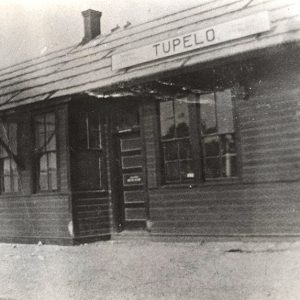 Tupelo Depot
Tupelo Depot 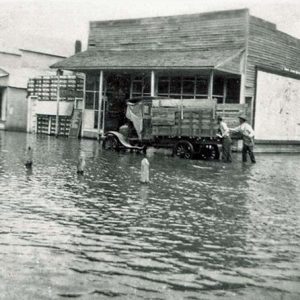 Tupelo Flood
Tupelo Flood 




Comments
No comments on this entry yet.